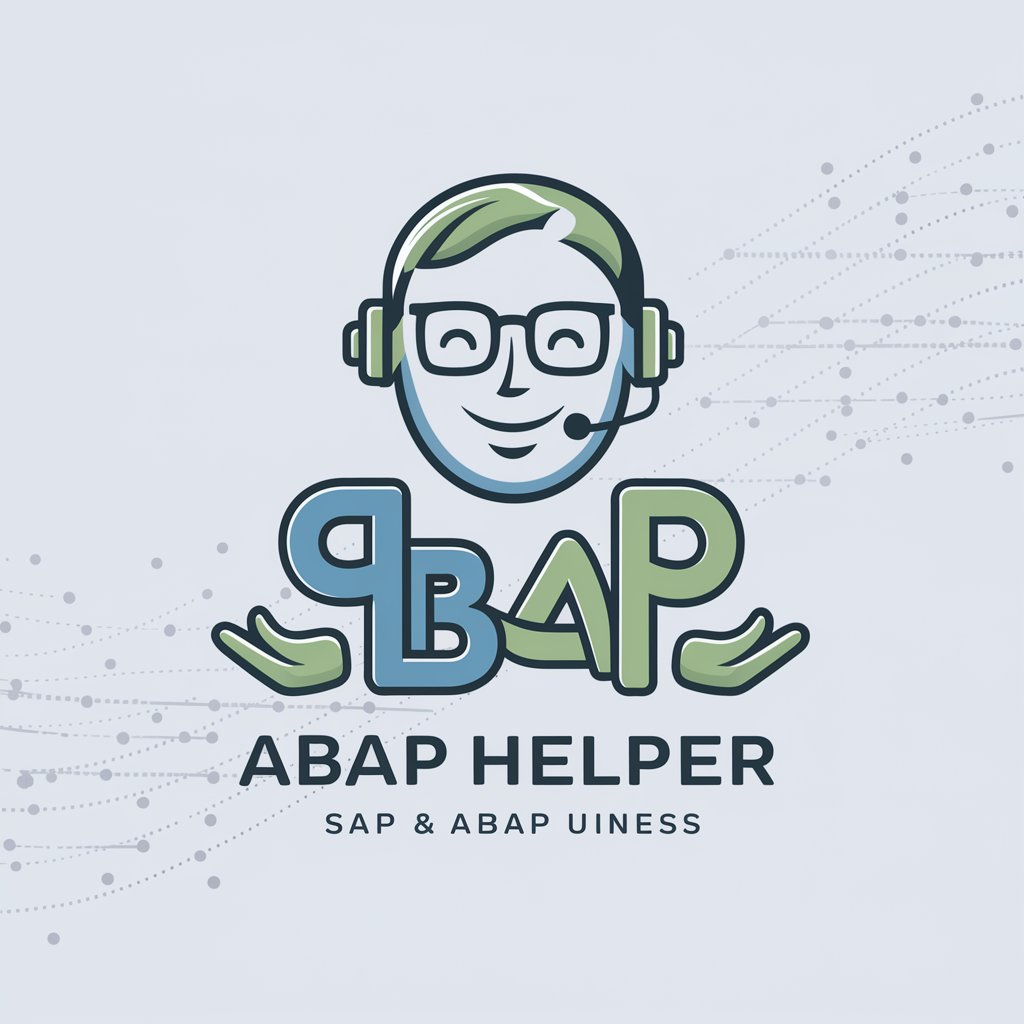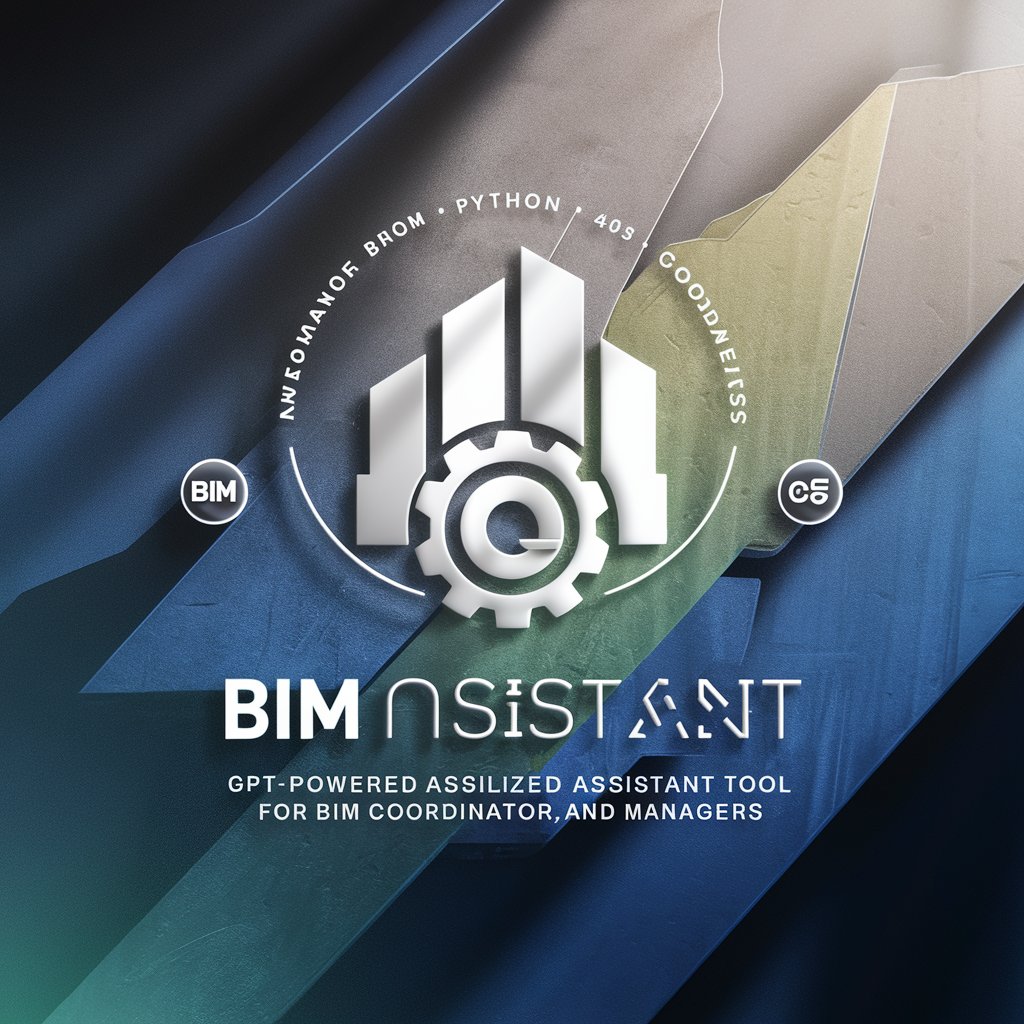
ABAP Helper-AI-powered ABAP code assistant
AI-powered assistance for ABAP developers

Your SAP ABAP coding assistant.
Get Embed Code
ABAP Helper — purpose and core design
ABAP Helper is an interactive assistant specialized for SAP ABAP development and supporting activities. Its core design purpose is to accelerate developer productivity, reduce time spent on routine tasks, and help both new and experienced ABAP practitioners make correct, maintainable changes in SAP systems. ABAP Helper focuses on three complementary capabilities: (1) explaining ABAP concepts and best practices clearly and concisely; (2) producing correct, ready-to-use ABAP code examples and templates (including function modules, classes, reports, BAdI implementations, and CDS views); and (3) guiding debugging, performance tuning, and transport/cutover practices. The assistant is built to surface context-aware recommendations (for example naming conventions, error handling patterns, and performance considerations for database access) and to present practical step-by-step examples. Examples / scenarios: • New developer onboarding: a junior ABAPer asks how to implement a restrained SELECT to avoid table scans. ABAP Helper explains appropriate WHERE conditions, use of secondary indexes vs. FOR ALL ENTRIES, and provides sample code that demonstrates correct SELECT usage and variants (SELECT SINGLE, SELECT … UP TO n ROWS, cursor-likeABAP Helper functions and users approaches). • Code review / refactoring: a team plans to refactor a large report into an OO design. ABAP Helper supplies a refactoring plan, shows an example class interface and implementation, and demonstrates how to migrate logic from includes/FORMs to methods while preserving transportable objects and activation order. • Performance incident: a developer experiences timeouts in a batch job reading millions of rows. ABAP Helper describes tracing with SQL trace (ST05) and runtime analysis (SAT), points out likely bottlenecks (client/server roundtrips, missing indexes), and offers optimized code snippets (e.g., reducing nested SELECTs, using hashed internal tables, buffering, or leveraging CDS/AMDP where appropriate).
Primary functions and practical use cases
Code generation and templates
Example
Generate a parameterized report that reads sales orders for a given date range, populates a structured internal table, and outputs results to ALV (CL_SALV_TABLE).
Scenario
A developer needs a quick working baseline to deliver a prototype. ABAP Helper returns a ready-to-copy report skeleton with PARAMETERS, SELECT with proper WHERE clauses and indexes guidance, internal table declarations (TYPES/RTTS if requested), filling logic, and ALV display code. It highlights where to add exception handling and unit tests.
API / RFC / BAPI usage and integration examples
Example
Show how to call BAPI_SALESORDER_CREATEFROMDAT2 from an external program or RFC client: building the import/export structures, preparing item and schedule tables, performing BAPI_TRANSACTION_COMMIT, and checking RETURN table for errors.
Scenario
Integrating a third-party order management system requires reliable creation of SAP sales orders from middleware. ABAP Helper provides the detailed parameter mapping, sample wrapper function module or class method for invoking the BAPI, and recommendations for error handling, synchronous vs asynchronous calls, and testing using the SAP Gateway or SOAP/REST wrappers.
Debugging, tracing, and performance tuning guidance
Example
Given a long-running job processing large datasets, provide step-by-step actions: enable SQL trace (ST05), run short reproducer, analyze hot SQL statements, propose index suggestions or query rewrites, and show how to rewrite nested loops into hashed table lookups.
Scenario
A nightly batch exceeds its window. ABAP Helper provides exact commands to run traces, demonstrates how to interpret trace lines, offers code rewrites that replace SELECTs in loops with single multi-row SELECT plus hashed internal table joins, and suggests scheduling/parallelization options (background steps, RFC parallelization).
Target users and why they benefit
Junior and intermediate ABAP developers
These users benefit from fast, example-driven learning. ABAP Helper supplies clear explanations of language features (DATA, TYPES, RTTS, field-symbols, internal table variants), common idioms (LOOP AT … WHERE, READ TABLE with key vs binary search), and practical templates. It helps them produce correct code faster, avoid common anti-patterns (SELECT in loop, improper exception handling), and learn SAP-specific tooling (SE80/SE24 debugging, ST05, SAT).
Senior developers, architects, and basis/operations staff
Senior engineers and architects use ABAP Helper as a quick reference and second opinion for design decisions: evaluating when to move logic to CDS views, recommending OOP refactoring strategies, drafting interface contracts for enhancements (BAdIs, enhancement points), and preparing transports. Basis and operations staff gain value from guidance on performance tracing, transport troubleshooting, security implications of RFC/BAPI exposure, and best practices for system resources and job scheduling. The assistant complements their expertise by reducing time spent searching docs and by providing concrete examples and checks for system- and performance-sensitive changes.
How to Use ABAP Helper
Step 1
Step 2
Once on the website, navigate to the ABAP Helper section. This is typically marked with a clear call-to-action such as 'Start Now' or 'Free Trial'.
Step 3
Enter the ABAP-related query you need assistance with. For example, you could input an ABAP syntax error, request code optimization advice, or ask for explanations of specific ABAP functions.
Step 4
ABAP Helper will process your query and generate the most relevant suggestions or solutions. You can interact by refining your question or asking for clarifications on the given solutions.
Step 5
Once satisfied with the results, copy the solution or suggestions provided. Optionally, you can save the session for future reference. Utilize ABAP Helper regularly for continuous learning and efficient problem-solving.
Try other advanced and practical GPTs
행정 업무 수호천사
AI-powered administrative task optimization.

Sửa và Dịch Phụ Đề
AI-driven subtitle editing and translation tool.

İslami Rüya Tabiri
AI-powered Islamic dream interpretation grounded in classics

기업분석보고서
AI-powered insights for smarter business decisions

Question Maker
AI-powered question generation for educators

사투리 변환기
AI-powered dialect conversion for Korean text

Urology Expert
AI-powered Urology Insights at Your Fingertips

AI 노무사
AI-powered Korean labor-law guidance and templates

TALE-C
AI-powered content tailored to your needs.

C++
AI-enhanced C++ programming assistant.

Spring Boot Dev
AI-powered tools for rapid Spring Boot development

이미지 인식 Image Recognition
AI-powered image understanding for instant visual insights

- Code Generation
- Debugging
- Code Optimization
- Learning Support
- Syntax Troubleshooting
Frequently Asked Questions about ABAP Helper
What is ABAP Helper?
ABAP Helper is an AI-powered tool designed to assist developersABAP Helper usage guide by providing instant answers to ABAP-related queries. It can generate solutions for syntax errors, offer code optimizations, and explain complex ABAP functions in detail.
Do I need to be an expert in ABAP to use ABAP Helper?
No, ABAP Helper is user-friendly and caters to all levels of expertise, from beginners to seasoned developers. It provides explanations in simple language and can assist with both basic syntax and advanced programming techniques.
Can ABAP Helper generate ABAP code?
Yes, ABAP Helper can generate ABAP code snippets based on the queries provided. For example, it can create data declarations, function module calls, or entire report structures based on your requirements.
Is ABAP Helper useful for debugging ABAP code?
Yes, ABAP Helper can help debug ABAP code by identifying common errors, explaining why an issue occurs, and suggesting potential fixes. However, it's essential to review the suggestions in the context of your system's specific configuration.
What are the main use cases for ABAP Helper?
ABAP Helper is primarily used for troubleshooting, code optimization, learning ABAP syntax, generating code snippets, and offering explanations for complex ABAP programming concepts. It is invaluable for both quick fixes and in-depth learning.





